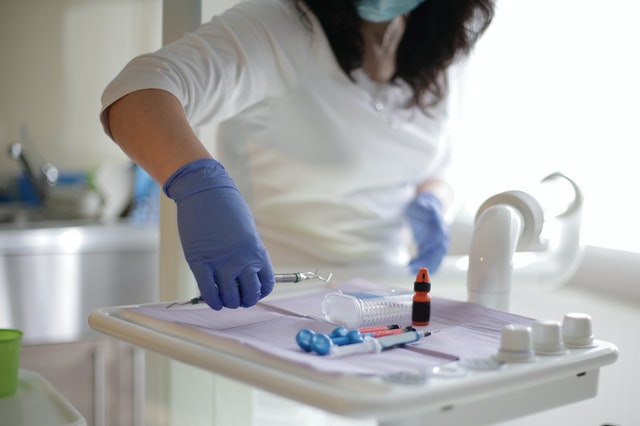How To Pass the Hesi A2 Exam? How does one prepare for the Hesi A2 test? To begin with, it’s crucial to understand what the Hesi A2 exam consists of. This blog article will go over studying for the Hesi A2 and provide success recommendations.

What does HESI stand for?
The HESI Entrance Exam is also known as the HESI Admissions Assessment Exam or the HESI A2. Schools often use HESI to help predict the student’s likelihood of success in tests. Their Admission Assessment Exam is used as a baseline entrance criterion by some nursing schools. The total time allotted to complete the exam is 4.25 hours.
Your result of each section of the exam must be passed with a 75% or higher to pass the HESI A2 exam.
What’s on the HESI A2 Exam?
Reading Comprehension: Provides reading scenarios in order to measure reading comprehension, identifying the main idea, finding the meaning of words in context, passage comprehension, making logical inferences, etc.
Recommended time: 60 minutes 55 items
Vocabulary & General Knowledge: Contains vocabulary terms that are commonly used in both general English-speaking settings and in health care fields.
Recommended time: 50 minutes 55 items
Grammar: Contains basic grammar, including parts of speech, important terms, and their uses, commonly occurring grammatical errors, etc.
Recommended time: 50 minutes 55 items
Math: Focuses on math skills needed for health care fields, including basic addition, subtraction, multiplication, fractions, decimals, ratio and proportion, household measures, general math facts, etc.
Recommended time: 50 minutes 55 items
Physics: The physics test will cover general physics concepts such as rotation, friction, gravitation, energy, average speed, Newton’s Laws of Motion, projectile motion, light, optics, and acceleration.
Recommended time: 25 question exam with 50 minutes
Biology: The biology questions are focused on general biology topics including biology basics, cellular respiration, photosynthesis, metabolism, biological molecules, and cells.
Recommended time: 25 question exam with 25 minutes
Chemistry: The questions are focused on: the periodic table, chemical equations, atomic structure, chemical bonding, nuclear chemistry, and chemical reactions.
Recommended time: 25 question exam with 50 minutes
Anatomy and Physiology (only): Provides coverage of general terminology and anatomical structures and systems.
Recommended time: 25 minutes 30 items
Personality Profile (not graded, for diagnostic purposes only)
Learning Style: Assesses the preferred learning style.
Recommended time: 15 minutes 14 items
Personality Profile: Assesses personality related to preferred learning style.
Recommended time: 15 minutes 15 items
HESI Exam TIPS

Learn Techniques for better performance: To achieve your goal and to give your best in the HESI A2 test, you need to prepare with proper planning and techniques. Without proper techniques, it won’t help you much. So, if you have decided to give HESI A2 test, start preparing with a study plan.
Prepare with quality study materials: The best quality study materials will help you to understand more about the actual exam and it also contains good content that will make you understand your progress.
Take rest and reduce anxiety: Your mind needs rest before the exam. If you want to perform better in the exam, take proper rest the night before the exam and try to eat healthy before the exam. Researchers have proven the relation between sleep and cognition. Take proper rest to avoid any mistake in the examination hall due to restlessness or fatigue.
Take Practice Tests: You can take these practice tests to figure out your weak areas and improve upon them. Actually, We have designed our free HESI A2 practice test and questions to help you in your preparation and to know about the actual exam.
Carefully read the questions before giving a response: When you’re taking the HESI A2 Exam, make sure to read all the questions carefully and then give a response if you are confident about it. Sometimes test makers design distracting questions, so you have to be more careful to analyze the answer and give the right response.
Manage your time effectively: Time management is very critical during the exam. It’s always better to start managing your time since you have started practicing for the actual exam. It will help you manage your time in the HESI Exam effectively. Always try to attempt the questions you are confident about and then go for the other questions; it will save your precious time in the examination hall.
Read more>> Where can I take the HESI A2 exam?
HESI Exam FAQs
What should I study?
Math skills are an important part of the HESI A2 exam so focus on these first. It may also help you to take a math refresher course if it’s been a while since you last studied math
You’ll also need to know how to use the calculator and enter numbers correctly when taking the HESI A2 test
Be sure to study the different skills tested on the HESI A2 exam such as reading comprehension, math, and science
Finally, don’t forget about social studies because they are also important for completing the Hesi A2 test
What is a good score on HESI A2?
75%
Elsevier, the creator of the HESI A2, reports that its passing score is 75%. This could vary depending on the scoring scale of your school.
HESI is more difficult than Nclex?
This final question may not have an answer. As I am unsure of how to quantify difficulty levels and what constitutes a “good” score for either test. However, anecdotally speaking from my experience teaching Hesi content in class, it does seem much harder to pass than NCLEX-RN. As you can tell by reading this post so far there are many tips that will help you study for your exam! The most important tip would be practicing with past questions or even better yet taking practice exams under simulated testing conditions (realistic computer environment). From this, you will have some idea of how the test scores and what kind of questions to expect.
If you want to know more about HESI and NCLEX, read more: What Are The Differences Between HESI vs NCLEX?
Why is Hesi more difficult than Nclex?
Nclex has a question about every topic that you have studied, while HESI does not follow those rules. This can make it hard for students because they might study something on their own in a different way from how it presents on the test. For example, I was studying respiratory therapy before taking my exam but there were only two questions total related to this subject area. That made me feel like my studies weren’t as helpful as they could have been with other content areas covered by the exam!
What should I do if I don’t remember how to solve an equation?
You can use a calculator on your phone or check online (i.e., Google) to find the answer.
You should also study these types of questions in advance to avoid being stuck during your exam.
Those who are required to take the Health Education Systems, Inc. Admissions Assessment (HESI A2) assessments have two basic options:
- Exams may be held on-site at postsecondary schools that need them as part of the admission process
- This test is also available at Prometric testing centers around the United States.
HESI Practice Test – ABC Elearning
Our Passemall website gives access to a number of Hesi evaluation tools and is a totally free resource for educators, parents, and students. This page is for students who are interested in learning more about individualized education. We have done our best to provide you with all the free, friendly, and humorous test preparation options possible in order to ensure your success. If our efforts here have been helpful to you, take a look at our high-quality HESI A2 study guide and Free HESI practice test to advance your learning.

PCCN vs CCRN: Which Certification Should I Take?
In this discussion, we will examine the fundamental distinctions between PCCN vs CCRN certifications, allowing you to make an informed and right decision about which certification is best for your nursing career progression.
June 20, 2023

Is PCCN Worth It? A Comprehensive 2025 Study Guide
In this article, we will provide all the enrollment criteria, how to apply, whether is PCCN worth it for you to obtain, and how to get a high mark.
June 20, 2023

PCCN Requirements - How to Become a Progressive Care Certified Nurse?
To become a progressive care nurse, you must first obtain the PCCN certification. This post will help you understand PCCN certification, PCCN requirements, and efficient approaches to obtaining this certification.
June 20, 2023



![The Ultimate Chemistry Study Guide For HESI A2 Exam [2024]](https://passemall.com/wp-content/uploads/2021/07/chemistry-study-guide.jpeg)
